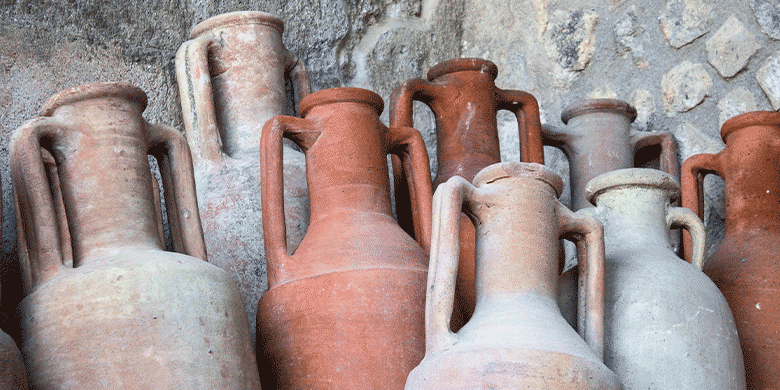
26 June, 2023
Short History Of Drink Bottles
The invention of the modern-day drink bottle is a fascinating story that spans centuries of human history. From the earliest pottery vessels to today's advanced thermos flasks, the evolution of drink bottles is a testament to humanity's ingenuity and thirst for innovation.
Early Drink Vessels
Humans have been using vessels to carry liquids for thousands of years. The earliest known drink containers were made from natural materials such as gourds, coconuts, and animal skins. These containers were used by various civilizations for storing water, wine, and other liquids.
In ancient Egypt, water was carried in clay jars called amphorae, which were sealed with wax or stoppers made from animal skins. Similarly, the Greeks used amphorae to store and transport wine. These vessels were made from clay and had a narrow neck, allowing them to be carried on the back of donkeys or camels.
During the Middle Ages, drinking vessels were made from materials such as leather, wood, and metal. These containers were often decorated with elaborate designs and were used by nobility and wealthy merchants. The common folk used pottery jugs, which were bulky and difficult to transport.
The Evolution of the Modern Drink Bottle
The modern drink bottle as we know it today began to take shape in the 19th century. The first patent for a modern beverage container was filed in 1888 by William Painter, an American inventor. Painter's invention was a metal cap with a cork lining that could be used to seal glass bottles.
In 1903, Michael J. Owens invented the first automated bottle-making machine. This machine allowed for the mass production of glass bottles, making them more affordable and accessible to the general public. Glass bottles became the most popular way to package beverages such as milk, soda, and beer.
In the 1940s, the plastic revolution began. Polyethylene terephthalate (PET) was invented in 1941 and soon became the material of choice for bottling carbonated beverages. Plastic bottles were lighter, cheaper, and more durable than glass bottles, and they were less likely to break during shipping.
The Invention of the Thermos Flask
One of the most significant innovations in the history of drink bottles was the invention of the thermos flask. The thermos flask, also known as the vacuum flask, was invented by Sir James Dewar in 1892. Dewar was a Scottish chemist studying matter's properties at low temperatures.
Dewar's invention consisted of two glass flasks with a vacuum between them. The vacuum created an insulating layer, preventing heat transfer and keeping liquids hot or cold for extended periods. The thermos flask revolutionized the way people carried and consumed drinks, especially during outdoor activities and travel.
The Evolution of Drink Bottles Today
Today, drink bottles are available in a wide range of materials, shapes, and sizes. Some popular materials include plastic, glass, stainless steel, and silicone. Each material has its own advantages and disadvantages, making it suitable for different uses.
Plastic bottles are lightweight and affordable, making them ideal for everyday use. However, they are not very durable and can leach harmful chemicals when exposed to high temperatures.
Glass bottles are durable and non-toxic, making them popular for storing and transporting drinks. However, they can be heavy and breakable, making them less suitable for outdoor activities.
Stainless steel bottles are durable and reusable, making them an eco-friendly alternative to plastic bottles. They can keep drinks hot or cold for extended periods, making them popular for outdoor enthusiasts.
Silicone bottles are flexible and lightweight, making them easy to pack and carry. They are also durable and non-toxic, making them a safe and eco-friendly option for storing and transporting drinks.
In conclusion, the evolution of drink bottles over time is a fascinating story highlighting human civilisation's innovation and ingenuity. From ancient times to the modern-day, humans have been using containers to store and transport liquids. The invention of the modern drink bottle in the 19th century revolutionized the way we package and consume beverages. The plastic revolution in the mid-20th century introduced a new era of lightweight and durable bottles, and the invention of the thermos flask in the 19th century paved the way for keeping drinks hot or cold for extended periods. Today, drink bottles come in a wide range of materials, shapes, and sizes to meet different needs and preferences. The evolution of drink bottles is an ongoing process, and we can expect to see more innovative designs and materials in the future.
The Drink Bottles Team
